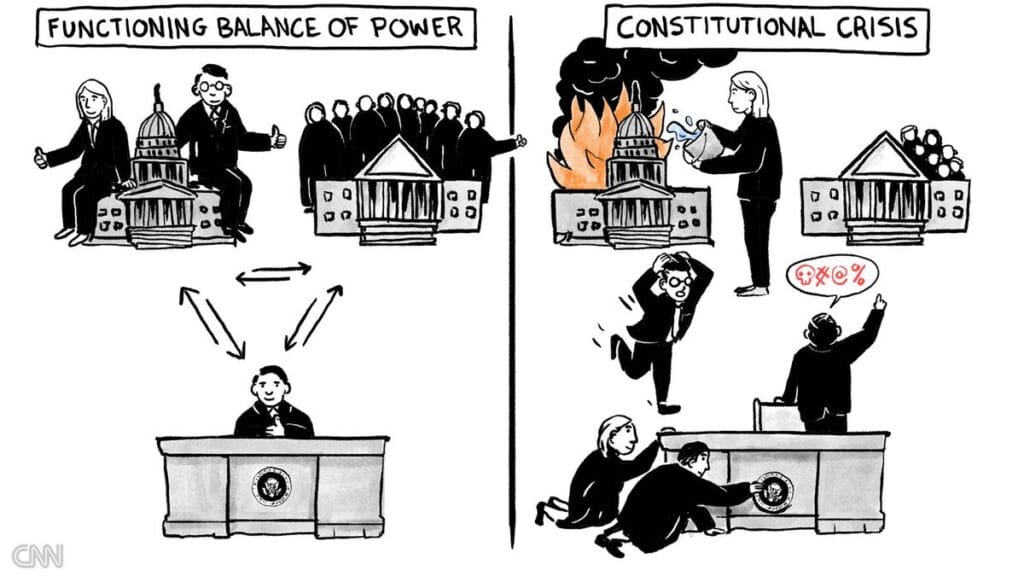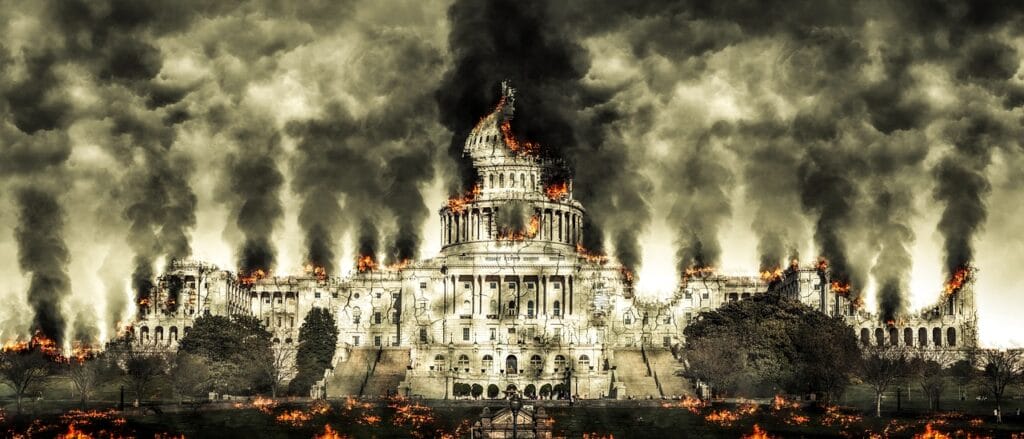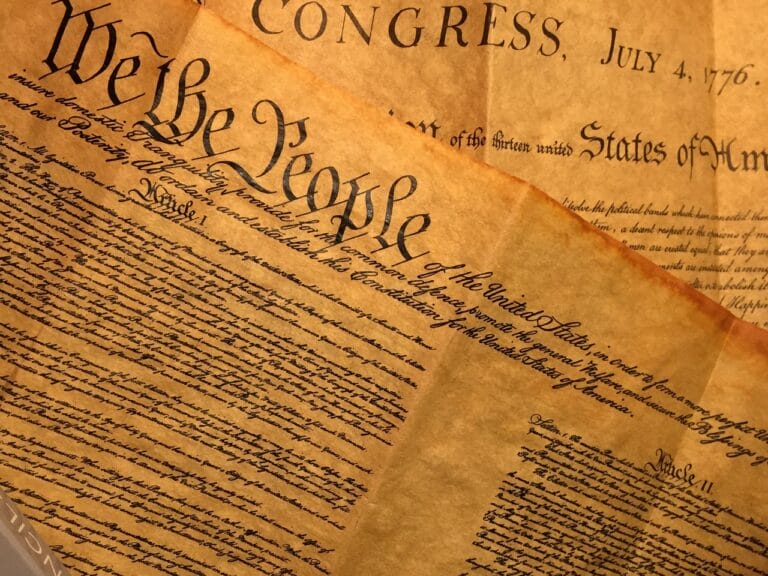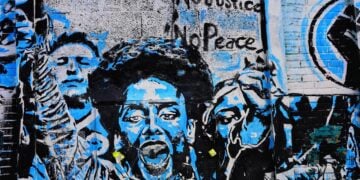When we hear the term constitutional crisis, it might evoke images of political chaos or heated debates in the halls of power. But what does it really mean? A constitutional crisis occurs when the framework of a country’s constitution is challenged, leading to a breakdown in political order and governance. It’s like a car running out of fuel in the middle of a highway; things can get pretty messy if no one knows how to steer.
At its core, a constitutional crisis suggests that the established rules of governance are either being ignored or are no longer effective. It creates an environment where the very fabric of democracy is under threat.
Imagine a sports game where the players refuse to follow the rules—chaos ensues, and everyone’s left wondering who the real winner is. In essence, a constitutional crisis can be a slippery slope, leading to legal conflicts, power grabs, and a population torn between competing factions.
How Does a Constitutional Crisis Happen?
Let’s Break Down the Causes
Actions leading to a constitutional crisis that have already occurred are bolded below. President Trump engaged in a few already—one happened after his first term. Yet, we elected him president again after everyone witnessed his attempt to destroy our democracy and “terminate the Constitution.” Apparently the price of eggs was more important than our freedom and the rights of all Americans laid out in the Bill of Rights and the U.S. Constitution.
Understanding how a constitutional crisis occurs is important for recognizing its potential impact. There are various causes, but some of the most common include failed elections, conflicts between branches of government, or the use of emergency powers that overstep legal boundaries.
For instance, if a president refuses to concede an election, invoking dubious legal claims, it can create a climate of uncertainty where no one knows who holds legitimate authority (The only people who were unsure of the legitimate President at the time were believers in Trump’s “Big Lie” and the people who participated in the Capitol attack on January 6, 2021).
Other factors can include political polarization, where differing ideologies create a stalemate, making it impossible for any consensus to be reached. This stalemate can lead to a situation where the executive branch might take extreme actions to assert dominance.
In such a scenario, one side often feels justified in ignoring the norms and rules, believing that the ends justify the means. The consequences of this kind of mindset can be dire, paving the way for a constitutional crisis.
Power Struggles: The Good, the Bad, and the Ugly
Power struggles are often at the heart of a constitutional crisis. They can range from healthy political competition to outright hostility. When political leaders or parties vie for control and refuse to cooperate, the system can become gridlocked. This is often observed in scenarios where one party gains control of the legislative branch while another controls the executive branch, leading to a tug-of-war that threatens the balance of power.
The ugly side of these power struggles can manifest in actions that undermine institutions, such as attempts to stack courts or dismiss officials who challenge one’s authority. It’s like trying to win a game by changing the rules mid-play; it can disrupt the integrity of the entire system. If these power struggles escalate and are not resolved through dialogue, it can easily spiral into a constitutional crisis.
Role of the Judicial Branch
The judiciary is often seen as the guardians of the Constitution. However, it can also become embroiled in crises when its authority is challenged. If a court ruling is ignored or undermined by political leaders, it can lead to a clash between branches of government. This can create a sense of legal ambiguity, where citizens are left questioning which laws are valid and who is really in charge.
President Trump has already been ignoring Congress and doing things over them instead of through them by having the Republican majorities pass legislation to accomplish parts of his agenda.
He’s halted funding that had been appropriated by Congress, which has the “power of the purse,” or authority to spend money through budgets. Trump has governed exclusively by executive order, signing 116 in 2025 so far.
When courts are perceived as biased or politicized, their legitimacy can be called into question, leading to widespread distrust among the public. We saw an example of this when the Supreme Court overturned Roe v Wade, taking away a right women had for decades.
This erosion of trust can exacerbate tensions and push a country closer to a constitutional crisis, as people start to feel that their rights and protections are no longer upheld. The judicial branch thus plays a double-edged role, acting as both a stabilizer and a potential flashpoint in times of political turmoil.
What Happens During a Constitutional Crisis?
The Domino Affect on Democracy
During a constitutional crisis, the impacts can ripple through a nation’s democratic framework. Institutions that once held authority can become paralyzed, leading to governance by chaos rather than consent. Political leaders may resort to authoritarian measures, bypassing traditional checks and balances, which can further erode democratic norms.
Citizens may find themselves caught in the crossfire, with their rights and freedoms jeopardized by the upheaval. This can result in widespread disillusionment with the political system, leading to protests, civil unrest, or even violence.
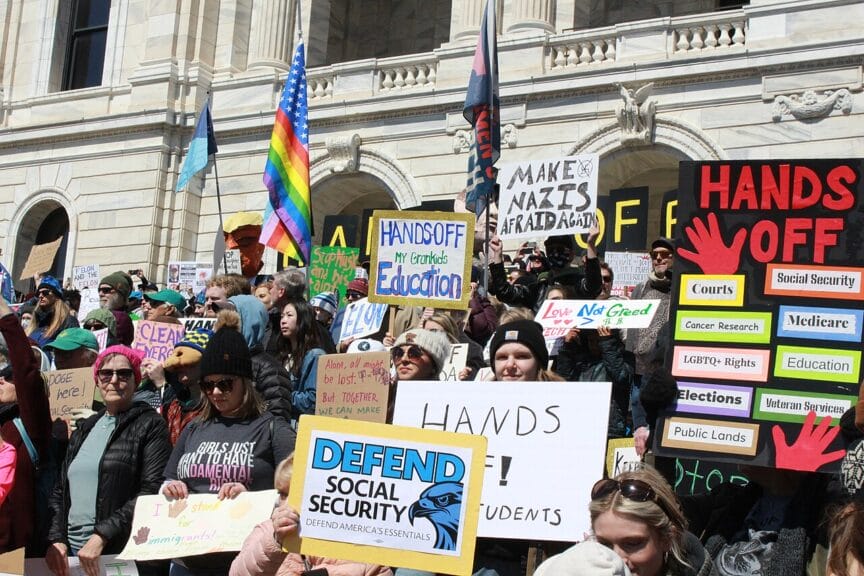
When the very essence of democracy is threatened, people often react passionately, and the social fabric can be torn apart, exposing deep-seated divisions that can take years to heal.
Public Reaction: Panic, Outrage, or Indifference?
The public’s response to a constitutional crisis can vary significantly based on the political climate and the media narrative. In some cases, there may be outrage and demands for accountability, while in others, people may feel paralyzed or indifferent, unable to comprehend the implications of what is happening.
This can lead to a sense of apathy, where citizens disengage from the political process altogether, believing their voices no longer matter. Luckily, most Americans are feeling outrage at the Trump administration and the actions of Elon Musk and his DOGE team (who have been engaging in illegal activities in their attempt to destroy various government agencies).
At the same time, there is also a feeling of hope in the form of huge crowds (over 35,000 people) showing up to events on the Fight Oligarchy tour. Senator Bernie Sanders and Representative Alexandria Ocasio Cortez have taken their economic populist message to states across the country.
Also, the role of the media cannot be understated during these times. A responsible media can inform and educate the public, highlighting the severity of the situation.
Unfortunately, the media has normalized Donald Trump’s behavior and his fascist rhetoric over the years, a major factor leading up to his victory in the 2024 election—and possibly the end of democracy in the U.S.
In contrast, sensationalist reporting can exacerbate fears and tensions, often misrepresenting facts for the sake of drama (Fox News, 100%). This contributes to the overall atmosphere of uncertainty and can play a significant role in shaping public perception and reaction.
It also leads to a hatred of “others,” mass shootings, xenophobia, distrust of institutions/experts, and even death from the intentional spread of misinformation during the COVID19 pandemic.
Media Frenzy: The Coverage We Didn’t Ask For
In the age of 24-hour news cycles and social media, a constitutional crisis tends to attract intense media scrutiny. This can lead to a phenomenon where the coverage itself becomes part of the crisis, as narratives are spun and amplified.
Journalists may focus on sensational aspects rather than providing nuanced analyses, which can confuse public understanding and heighten tensions.
The polarization of media outlets can exacerbate divisions, as different platforms present conflicting accounts of events. Right-wing media paints Trump as a hero fighting corruption, while left-leaning media paints him as a tyrant undermining democracy.
The media “bubbles” we find ourselves stuck in causes multiple narratives that make it difficult to determine what’s fact and what’s fiction. As Rachel Maddow refers to it: Earth One and Earth Two.
In our media-fueled climate, the risk of misinformation becomes a significant concern and intensifies the crisis.
Can We Get Out of a Constitutional Crisis?
Possible Resolutions: Hope vs Reality
Finding a way out of a constitutional crisis can be as complex as navigating a minefield. Various resolutions may emerge, from political negotiations and compromises to legal interventions.
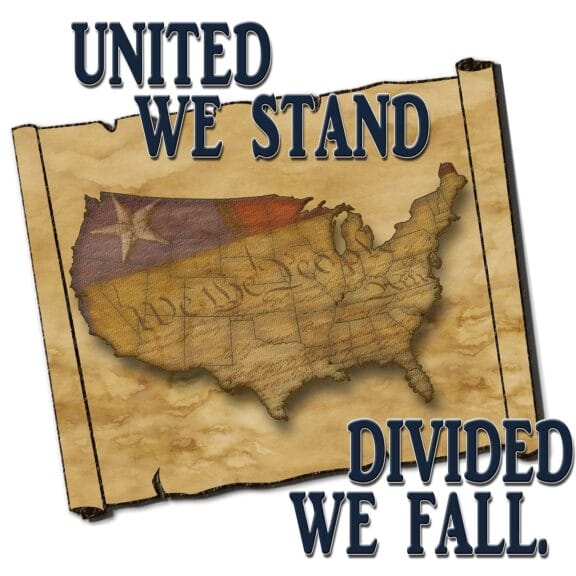
However, the effectiveness of these solutions largely depends on the willingness of the parties involved to engage in dialogue and prioritize the greater good over partisan interests.
In some cases, external pressures, such as protests or global diplomatic interventions, can catalyze change and encourage leaders to seek resolutions. Yet, the reality is often messier.
Political egos can be stubborn, making it challenging to come to a consensus. The road to recovery may involve painful compromises and a commitment to rebuilding trust, which can take years, if not decades.
The Role of Political Players and Institutions
Political players, including elected officials, activists, and civic leaders, play vital roles in getting through a constitutional crisis. Their actions can either worsen the situation or help pave the way for resolution.
Constructive engagement, open dialogues, and a willingness to listen can work wonders in restoring faith in democratic processes. Inflammatory rhetoric or attempts to delegitimize opposition can drive further wedges and deepen the crisis.
Institutions like the courts, legislatures, and civil society organizations also have roles to play. Courts can issue rulings that clarify legal confusion, while legislatures can enact laws that restore order.
Civil society organizations can mobilize public opinion and encourage civic participation, creating an environment where democratic norms can be upheld. When all these players work together, the chances of overcoming a constitutional crisis improve significantly.
Can Democracy Survive the Storm?
The ultimate question that looms over a constitutional crisis is whether democracy can emerge intact. History has shown us that democratic systems can be resilient, bouncing back stronger after crises.
However, it requires a collective effort from everyone involved to reaffirm their commitment to democratic values and the rule of law.
The scars of a constitutional crisis can linger long after the gaping wound has healed. A fractured society may deal with mistrust and division for years, making it necessary to address the root causes that led to the crisis in the first place.
If democracy is to survive the storm, it must adapt and evolve, learning from past mistakes to build a more inclusive and resilient system.
Have We Ever Gone Through One in the United States?
The United States has not been a stranger to constitutional crises throughout its history. One of the most notable examples occurred during the Watergate scandal in the 1970s, where a president was found to have engaged in illegal activities to maintain power.
The ensuing investigations and political fallout tested the limits of the constitutional framework, ultimately leading to the resignation of President Nixon. It was a period filled with uncertainty, but it also highlighted the resilience of American institutions in the face of crisis.
Another critical moment came during the Civil War when issues surrounding states’ rights and slavery culminated in a violent conflict. This crisis tested the very foundation of the nation and led to a reevaluation of the Constitution’s meaning and application.
The outcome shaped the trajectory of American democracy, proving that even the most significant crises can lead to growth and change.
Lessons Learned: What Has History Taught Us?
History offers invaluable lessons about surviving constitutional crises. One takeaway is the importance of adherence to democratic norms and the rule of law. Whenever leaders attempt to bypass these principles for political gain, it can set a dangerous precedent that erodes public trust and undermines democratic institutions.
This is why President Trump’s constitutional crisis would be critically different from others in history. He doesn’t care about the Constitution, the rule of law, or our democracy. There is only one thing he cares about: Donald Trump.
President Trump: Are We Prepared For Round Two?
As we observe current political events, it begs the question: Are we prepared for the possibility of a constitutional crisis? The answer is both hopeful and concerning. While democratic institutions in the U.S. have shown resilience, the increasing polarization and erosion of trust in these institutions signal that they are weakened.
To prepare for potential crises, citizens must educate themselves on their rights and the political process, advocating for transparency and accountability. We must create a culture of dialogue and compromise to help bridge divides and ensure that the lessons of history aren’t forgotten. If we embrace our civic responsibilities, we can better safeguard democracy for future generations to come.
The growth of the “Pro-democracy coalition” should give everyone hope. No matter how much we might disagree on policy or social issues, Americans (especially the working-class) must come together and fight as one to protect our country from fascism. The oligarchs and the CEOs love to pit us against each other through ridiculous culture wars.
Everyone must understand that they do it because if we were together, they wouldn’t stand a chance. So they cause us to fight and point at each other when we should be pointing up towards the richest 10% wrking to keep the American people “Stupid and poor.”

